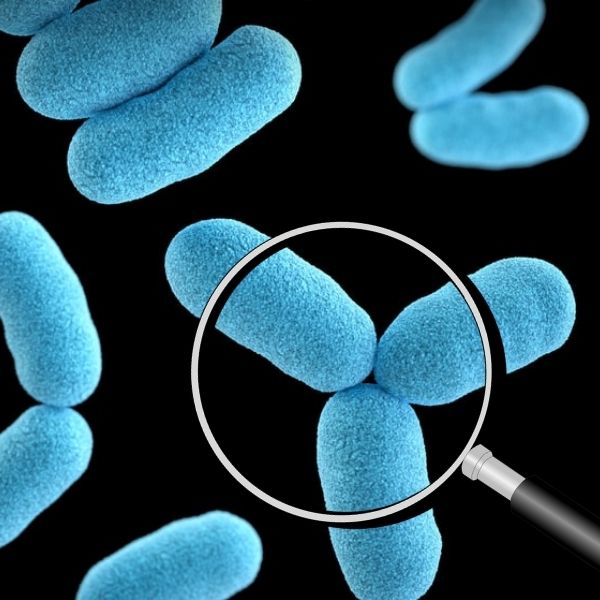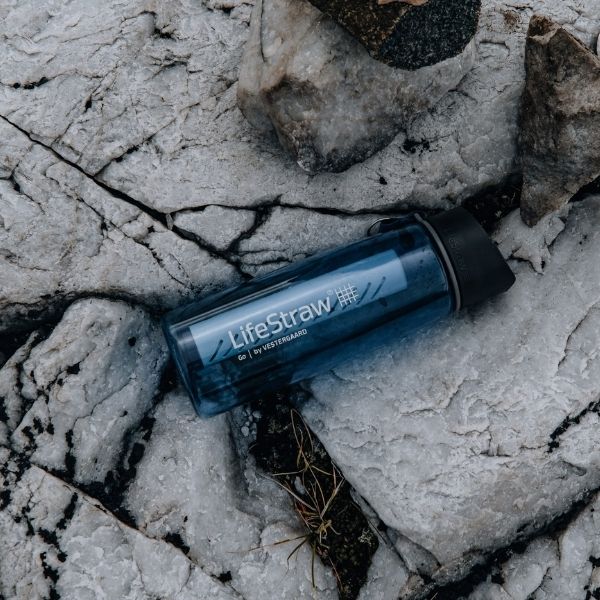4 Effective Ways of Removing Bacteria from Water
Depending on the water supply, there are several ways to remove bacteria. You can monitor the frequency of bacterial content in water and choose the most effective method for this purpose. However, here are the four most effective methods to remove bacteria from drinking water. How to remove bacteria from the water will not be any further problem after reading these methods:
1. Ozone
Ozone is a powerful gaseous compound to disinfect water that helps to destroy all waterborne microorganisms and bacteria. It penetrates inside bacteria’s cell walls and destroys their structure. Ozonated faucets installed in houses work well regarding this. Ozone disinfects water and destroys other contaminants such as herbicides, pesticides, iron, hydrogen sulfide, etc.
In ozone water treatment, Ozonator dissolves low ozone concentrations in water and rapidly destroys bacteria and other organic contaminants. It is a suitable technology to use at homes and in the commercial kitchen. With the ozone faucets installed in your kitchen, you can rest assured that you have disinfected water for drinking and cooking purposes.
2. UV Disinfection
UV light disinfection is one of the most reliable and effective methods of water treatment to disinfect residential water used for drinking purposes. UV light destroys the bacterial DNA and prevents its further multiplication. In this way, bacteria become harmless to human health and reduce health risks.
UV water filtration system produces no wastewater neither uses any chemical treatment in disinfection. Thus, it smoothly kills bacteria to disinfect the drinking water.
These UV disinfection systems are a perfect fit for homes that rely on well water, such as vacation and beach homes.
3. Chlorine
Water treatment industries use chlorine, shock chlorination, and chlorine tablets (chlorine dioxide). They are highly effective for the disinfection of water supplies and killing bacteria and microorganisms. You can use chlorine in several forms. These include sodium hypochlorite, chlorine gas, and calcium hypochlorite.
You need to add chlorine for a few hours. When it comes in contact with bacteria, it breaks down its chemical bonds at a molecular level. A weak acid, hypochlorous acid, is formed when treating water with chlorine. This hypochlorous acid then destroys the bacterial structure from inside out.
However, chlorine is used in controlled and calculated amounts. Therefore, chlorinated water is harmless for human health as long as it is used in a balanced way.
4. Distillation
Water distillers are an effective tool to remove bacteria from water. They are installed as a water treatment unit to eliminate bacteria, viruses, microorganisms, and other contaminants. Water comes to the boiler region of water distillers.
The heating element gets activated, and water boils till it ultimately converts into steam. The steam then enters the cooling coils, where it gets chilled and turns back into the liquid phase. And in the final step, it removes bacteria. After passing through the carbon post-filter, your drinkable purified water is ready.

What is Bacteria?
Bacteria are single cellular microbes, also known as germs, that are found everywhere in nature. They live everywhere, from glaciers to hot water. However, some bacteria are beneficial for human health, while some fall into the category of pathogens that are harmful to the human body.
These microcellular organisms can’t be seen with the naked eye, nor do they give any smell or test. However, you can detect them through microscopic analysis.
There are various types of bacteria found in nature. Some are rod-shaped, while others are coliform bacteria.
Source of Bacteria
Some bacteria are naturally present in water. However, some harmful bacteria such as E Coli, Shigella, and Salmonella are present in rivers and streams. They come into these water bodies through livestock and human fecal waste.
The sources of various bacteria are agricultural fertilizers, animal waste, sewage, industrial waste materials, and forest wastes that come directly in contact with the lakes, canals, streams, and other water bodies.
If left untreated, they can cause harmful diseases. Therefore, a water test is the only way to find out if the water contains pathogens such as coliform bacteria.
Normally, the Environmental Protection Agency makes sure that the public water suppliers test the water for coliform bacteria. However, if you suspect bacterial contamination, send the water to a nearby testing facility.
Symptoms and Danger of Bacterial Infection
Contaminated water contains several types of harmful bacteria that spread waterborne diseases. Different bacteria cause different types of diseases such as:
Coli bacteria such as Escherichia Coli can cause diarrhea, nausea, abdominal pain, and vomiting.
Campylobacter in wastewater also causes infection in which symptoms of cramping, fever, pain, and diarrhea appear. Symptoms and infection appear after 2 to 10 days of exposure to bacteria.
Salmonella is a bacteria that causes fever, chills, headaches, and pain. It contaminates the drinking water and food and causes symptoms to occur in one to three days after exposure to bacteria.
Cryptosporidium is a protozoan, which works similarly to parasites. This protozoan, if present in water, causes painful diarrhea and vomiting.
Giardia Lamblia is also a parasite that causes infection. It causes nausea, diarrhea, cramps, and stomach problems. The incubation period for this disease is 7 to 14 days.
Cyclosporiasis is also a diarrheal illness that occurs due to the protozoan parasite, Cyclospora cayetanensis. People get infected by Cyclospora due to having food or water that is contaminated with the feces containing this parasite.
It is essential to drink water that is free from bacteria to ensure a healthy lifestyle. Therefore, removing bacteria from drinking water is vital for human health.
Does Water Filter Remove Bacteria?
Water filters come in various categories. Depending upon their type, some water filters remove bacteria while some don’t. It is often asked that water filters kill bacteria? No, the bacteria are not killed by water filters; instead, the drinking water is filtered out by the filters and gets purified from bacteria and other pathogens.
There are several kinds of water filters commercially available for water treatment that not only filter out bacteria but also other pathogenic microorganisms. Other than that, several contaminants and harmful chemicals can also be removed with the help of water filters.
If you are not satisfied with filters, you can use other methods like ozone, UV rays, and chlorine dioxide tablets.
Which Water Filters Remove Bacteria?
There are several kinds of bacteria that remove bacteria from water. Some of them are as follows:
1. Reverse Osmosis Filters
Not every RO system but certain certified filtration systems can remove the bacteria from water. You can install these reverse osmosis systems at your houses, such as in kitchens where all the filtration process occurs. When water passes through the RO membrane, the bacteria stick to it, and water passes through the filter.
The size of the reverse osmosis membrane is really small. That is why it does not let bacteria pass through it. Moreover, multiple pre and post-filters also help remove bacteria in these systems. However, not every reverse osmosis filter has the capability to remove bacteria. You need to make sure of that before buying it.
2. Backpacking Water Filters
Camping is an adventurous activity, but lakes, streams, and rivers don’t contain pure water. There is a lot of contamination in water bodies that come from scattered sources. Carrying backpacking water filters with you at such places helps you to get pure water free from waterborne pathogens. Here are some backpacking filters you can use to improve water quality:
Sawyer Squeeze Water Filter
It is a lightweight and compact filter that is easy to use. It effectively removes up to 99.9% of pathogenic bacteria with its filter membrane of pore size 0.1-micron.
Gravity Fed Water Filter
Gravity water filters come with hollow fiber technology. Water flows through the walls of the filter that purifies water. Enjoy having bacteria-free water even on your adventurous journeys.

3. UV Water Bottles
UV purification is one of the successful disinfection practices. UV filtered water bottles have proven to be extremely effective in removing disease-causing bacteria and other chemicals from water. A major advantage of using water bottles instead of filters is that they are compact and easy to carry anywhere. The ultraviolet light neutralizes 99.9% of bacteria and waterborne viruses.
FAQs on How to Remove Bacteria from Water
Does boiling water kill bacteria?
Boiling can kill Disease-causing bacteria and other waterborne viruses. When the temperature rises to 100 degrees celsius, the structure of bacteria and other microorganisms gets destroyed, and it kills the bacteria. Therefore, boiling water is considered an effective treatment for bacterial removal. Therefore, you can boil water to make it disease-free.
Does water softener remove bacteria?
No, water softeners are not effective in killing pathogenic bacteria. They can be used for water purification from contaminants and heavy metals but don’t kill bacteria. However, other disinfection methods such as UV filtration and the use of chlorine work the best in water purification from bacteria.
Does Zero Water remove bacteria?
No, zero water is not an effective method for bacteria removal. It does not remove bacteria, viruses, and other pathogenic microorganisms. However, it helps to remove inorganic matter from water.
To remove bacteria from drinking water, water filters and replacement water filters with minimum pore size work the best. These water filters come in such a small size that they don’t let the bacteria pass through the membrane.
Conclusion
In this guide, we have covered all the aspects of how to remove bacteria from water. Learn how the bacteria affects your health and how you can effectively remove it from water. Have more suggestions and ideas for bacterial removal from drinking water? Let us know in the comment section below.
